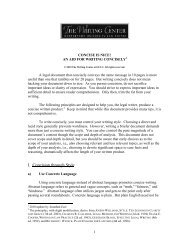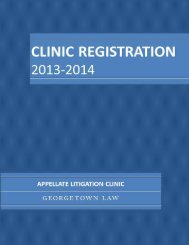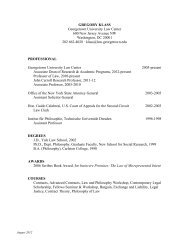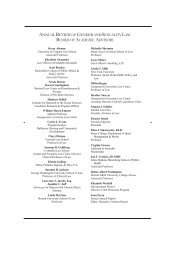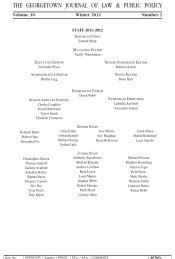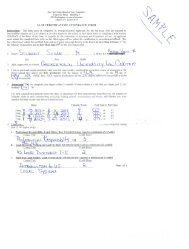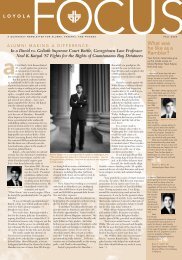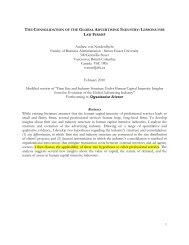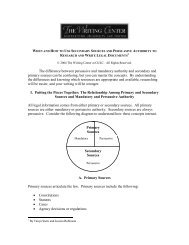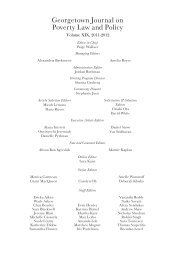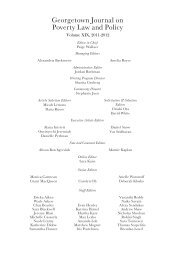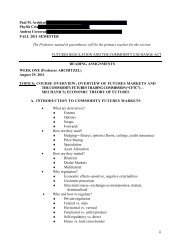Date: April 12, 2013 Topic: The Shrinking ... - Georgetown Law
Date: April 12, 2013 Topic: The Shrinking ... - Georgetown Law
Date: April 12, 2013 Topic: The Shrinking ... - Georgetown Law
Create successful ePaper yourself
Turn your PDF publications into a flip-book with our unique Google optimized e-Paper software.
specialized complementary assets (Arora et al., 2006; Teece, 1986). Lippman et al. (2003) go<br />
as far as to state that no resource is firm-specific, and suggest that firm value can be traced to<br />
the presence of co-specialized resources that exist within the legal shell of the firm. Resource<br />
co-specialization then is associated with excess value, or synergy, that results from the<br />
interaction of different resources within firm boundaries.<br />
A number of explanations have been put forward in the literature to explain the<br />
emergence of gains from resource co-specialization. 1 Nelson et al. (1982) describe how<br />
organizational resources are engaged in functioning routines that enable firms to economize<br />
on coordination costs. Kogut et al. (1992) explain that the emergence of high-order principles<br />
through organizational membership enhances knowledge creation and sharing. More recently,<br />
the ability of managers to ‘dynamically manage’ their resources and ‘orchestrate’ their<br />
deployment has been shown to contribute to firm performance (Adner et al., 2003; Sirmon et<br />
al., 2009).<br />
<strong>The</strong> generation of synergies resulting from resource co-specialization will affect the<br />
design of plural sourcing strategies, as firms will be less reluctant to outsource production.<br />
Market contracting entails the externalization of resources, which reduces the opportunities<br />
of resources to become co-specialized. Hence, in the case of plural sourcing, there will be<br />
more emphasis on make when resource co-specialization is likely to generate synergies. It is<br />
important to clarify here that our notion of resource co-specialization is distinct from<br />
complementarity between procurement modes as described by Puranam et al. (forthcoming).<br />
Whereas they focus on the excess value resulting from the simultaneous use of both market<br />
contracting and hierarchical governance, we emphasize the excess value resulting from the<br />
interaction of internalized resources with other firm resources. Resource co-specialization is<br />
1 We prefer to use the concept of resource co-specialization as opposed to resource complementarity (Milgrom<br />
et al. 1995) because resource co-specialization emphasizes the dynamic nature of the process of generating<br />
synergy. This synergy is not a characteristic of the resource but develops through ongoing interactions within<br />
firm boundaries. Complementarity results in a more instant generation of surplus value due to the attributes of<br />
assets or resources that may lie within or across the firm boundary.<br />
10



